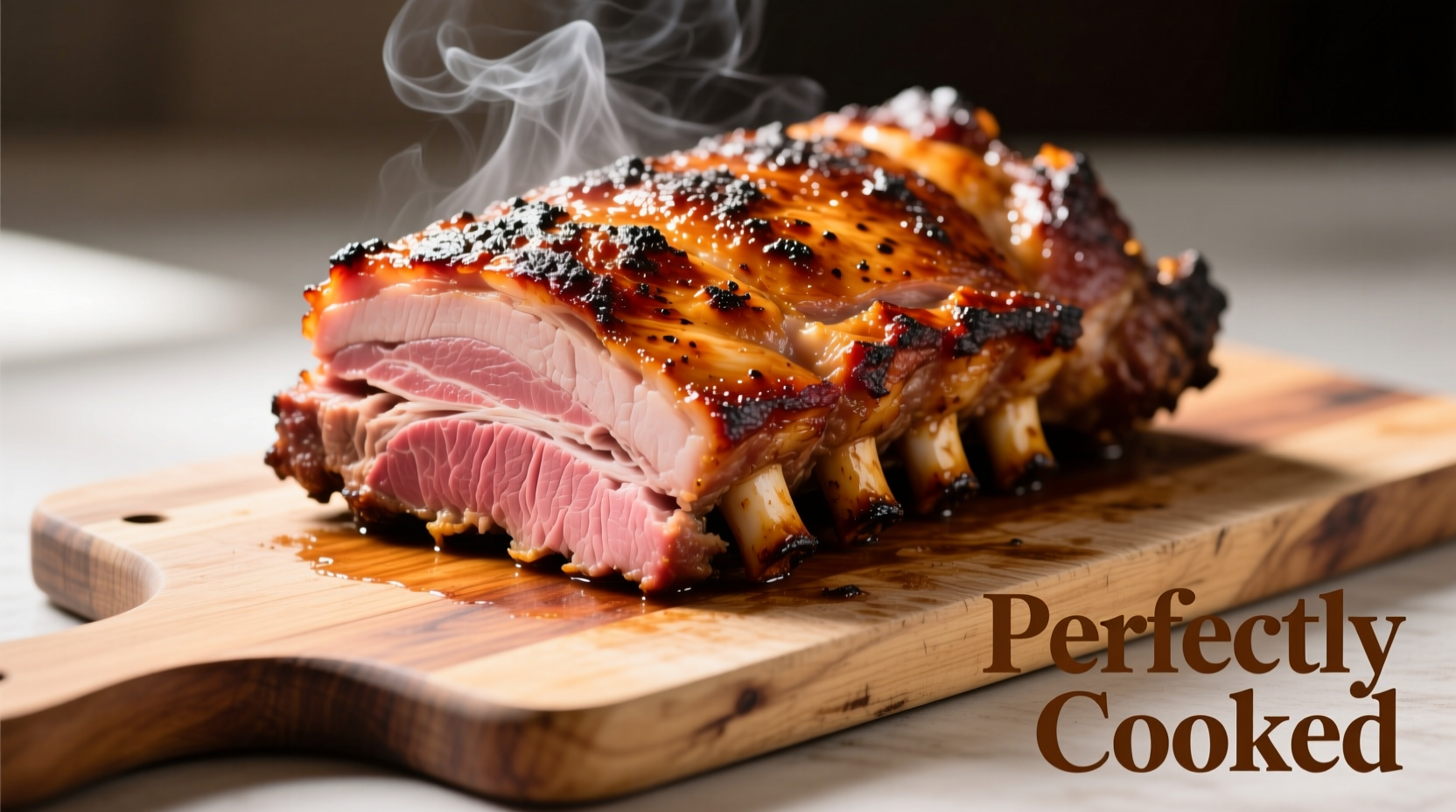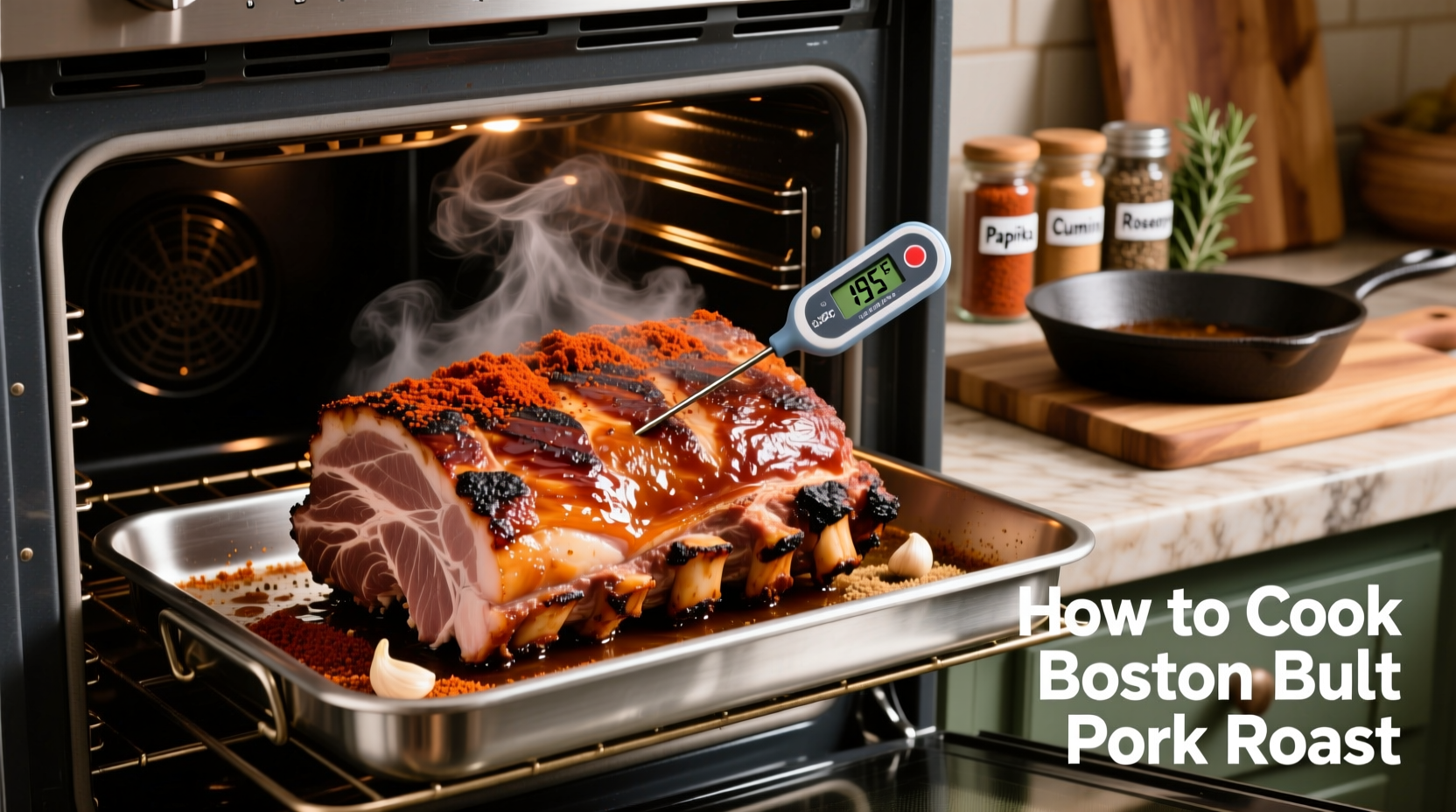Nothing beats the rich, smoky flavor of perfectly cooked Boston butt pork roast. Whether you're planning a weekend feast or preparing for game day, this guide delivers the exact techniques professional pitmasters use to achieve melt-in-your-mouth pulled pork every time. Forget dry, tough results—our science-backed approach ensures succulent, flavorful meat with minimal effort.
Why Low and Slow Cooking Works for Boston Butt
Boston butt, despite its misleading name, comes from the pig's shoulder—not the rear. This well-marbled cut contains abundant connective tissue that requires proper breakdown to achieve tenderness. The magic happens between 160-205°F, where collagen transforms into gelatin through hydrolysis. Cooking below 250°F prevents muscle fibers from seizing up while allowing enzymes to tenderize the meat naturally.
| Cooking Stage | Temperature Range | Chemical Process | Result |
|---|---|---|---|
| Initial Cooking | 140-160°F | Protein denaturation | Meat firms up slightly |
| "The Stall" | 160-170°F | Evaporative cooling | Temperature plateau as moisture evaporates |
| Collagen Breakdown | 160-205°F | Hydrolysis into gelatin | Tender, succulent texture |
| Final Pull Temperature | 195-205°F | Complete connective tissue dissolution | Effortless shredding capability |
Preparation: Setting Up for Success
Start with a 6-8 pound bone-in Boston butt for optimal flavor and moisture retention. Remove the plastic packaging and pat dry thoroughly—this critical step ensures proper bark formation. Trim only excessive hard fat (¼ inch remains ideal for flavor and moisture). Apply a 50/50 salt-sugar rub with your choice of spices, then refrigerate uncovered for 12-24 hours. This dry brine technique enhances flavor penetration and surface drying for superior crust development.

Step-by-Step Cooking Process
1. Preheat and Setup
Preheat your smoker, oven, or pellet grill to 225-250°F. Use indirect heat with wood chunks for authentic smoke flavor—hickory, apple, or cherry work beautifully with pork. Place a water pan in the cooking chamber to maintain humidity and prevent drying.
2. Cooking Timeline
Place the seasoned roast fat-side up on the cooking grate. Insert a probe thermometer into the thickest part. Expect these key milestones:
- 3-4 hours: Beautiful mahogany bark forms
- 5-7 hours (internal 165°F): "The Stall" begins as evaporation cools the surface
- 8-12 hours (internal 195°F): Meat becomes probe-tender
3. The Texas Crutch (Optional but Recommended)
When internal temperature reaches 165°F and the stall begins, wrap tightly in butcher paper or aluminum foil with ¼ cup apple juice or broth. This technique speeds cooking while retaining moisture. Return to smoker until reaching 195-205°F.
Critical Resting Phase: Don't Skip This!
Transfer the cooked roast to a cooler or insulated container (no ice). Let rest for minimum 60 minutes, ideally 2-4 hours. This allows juices to redistribute and residual heat to complete the tenderizing process. Cutting too soon releases precious moisture, resulting in dry meat.
Shredding and Serving Like a Pro
Remove any large fat pockets, then use two forks or meat claws to pull the pork. For authentic BBQ texture, leave some larger chunks. Mix in ½ cup of your favorite barbecue sauce per pound of meat, or serve sauce on the side. The rendered fat ("pot liquor") makes incredible gravy—skim excess fat first.
Common Mistakes and Solutions
Problem: Meat isn't tender enough
Solution: Continue cooking to 200°F+—connective tissue breakdown requires time and temperature
Problem: Burnt exterior
Solution: Lower cooking temperature and ensure proper air circulation
Problem: Extended stall period
Solution: Wrap in butcher paper to push through the stall without steaming the bark
According to USDA Food Safety and Inspection Service guidelines, pork should reach minimum 145°F for safety, but Boston butt requires higher temperatures (195-205°F) for proper texture development. This extended cooking safely exceeds the required temperature threshold while transforming tough connective tissues.
When This Method Works Best
This low-and-slow approach excels for Boston butt cuts weighing 5-10 pounds. For smaller cuts under 4 pounds, reduce cooking temperature to 200°F to prevent overcooking. Electric smokers provide the most consistent results, while charcoal requires more attention to maintain steady temperatures. Avoid this method for leaner pork cuts like loin—the high fat content of Boston butt makes it uniquely suited for extended cooking.











 浙公网安备
33010002000092号
浙公网安备
33010002000092号 浙B2-20120091-4
浙B2-20120091-4